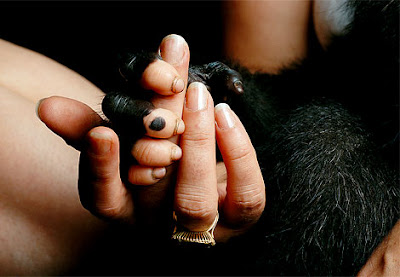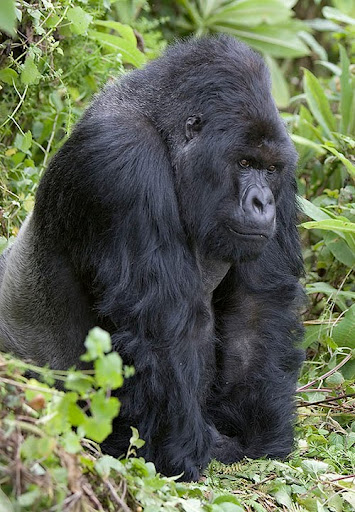
WHAT IS COLTAN?
Coltan, short for Columbite-tantalite is a metallic ore consisting of Niobium and Tantalum, found mainly in the eastern regions of the Democratic Republic of Congo (formally Zaire). When refined, coltan becomes a heat resistant powder, metallic tantalum which has unique properties for storing electrical charge. Of the 525 tons of tantalum used in the USA in 1998, 60% was used in tantalum capacitors, with a predicted growth rate of 14% per annum (from Uganda Gold Mining Ltd web site).
It is therefore a vital component in the capacitors that control current flow in cell phone circuit boards.
MINING COLTAN
Coltan is mined by hand in the Congo by groups of men digging basins in streams by scrapping off the surface mud. They then "slosh" the water around the crater, which causes the Coltan ore to settle to the bottom of the crater where it is retrieved by the miners. A team can "mine" one kilo of Coltan per day.
The tech boom caused the price of Coltan to rocket to as high as US$600 per kilogram at one point, compared to a previous value of US$65 per kilogram, although it has settled down to around US$100 per kilogram at the moment. A Coltan miner can earn as much as US$200 per month, compared to a typical salary of US$10 per month for the average Congolese worker.
80% of the world's known coltan supply is in the Democratic Republic of the Congo, which the UN says is subject to "highly organized and systematic exploitation."
COLTAN FINANCING THE WAR
A recent report by the UN has claimed that all the parties involved in the local civil war have been involved in the mining and sale of Coltan. One report suggested that the neighboring Rwandan army made US$250 million from selling Coltan in less than 18 months, despite there being no Coltan in Rwanda to mine. The military forces of Uganda and Burundi are also implicated in smuggling Coltan out of Congo for resale in Belgium.
A report to the United Nations security council has called for a moratorium on purchase and import of resources from the Democratic Republic of Congo, due to the ongoing civil war that has dragged in the surrounding countries.
COLTAN AND GORILLAS
The main area where Coltan is mined, also contains the Kahuzi Biega National Park, home of the Mountain Gorilla. In Kahuzi Biega National Park the gorilla population has been cut nearly in half, from 258 to 130 as the ground is cleared to make mining easier. Not only has this reduced the available food for the Gorillas, the poverty caused by the displacement of the local populations by the miners has lead to Gorillas being killed and their meat being sold as "bush meat" to the miners and rebel armies that control the area. Within the Dem. Rep. of Congo as a whole, the U.N. Environment Program has reported that the number of eastern lowland gorillas in eight Dem. Rep. of Congo national parks has declined by 90% over the past 5 years, and only 3,000 now remain.
Due to the damage caused to the Gorilla population and their natural habitat, companies that use Coltan are now starting to demand that their Coltan only comes from legitimately mined sources and is not a byproduct of the war. American-based Kemet, the world's largest maker of tantalum capacitors, has asked its suppliers to certify that their coltan ore does not come from Dem. Rep. of Congo or from neighboring countries. Such moves could lead to "Gorilla Safe " cellphones being marketed, much in the same way that Tuna meat is now sold as "Dolphin Safe".
If you have children under 4 years old, there will be no more gorillas for them to see by the time they reach 30. Enjoy them now, or urge cell phone companies to stop using coltan. Choose the life of a gorilla over your cell phone. Coltan is wiping out our entire gorilla population. Force companies to find an artificial substitute so that no more blood is shed.
02/23/11











